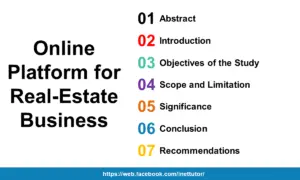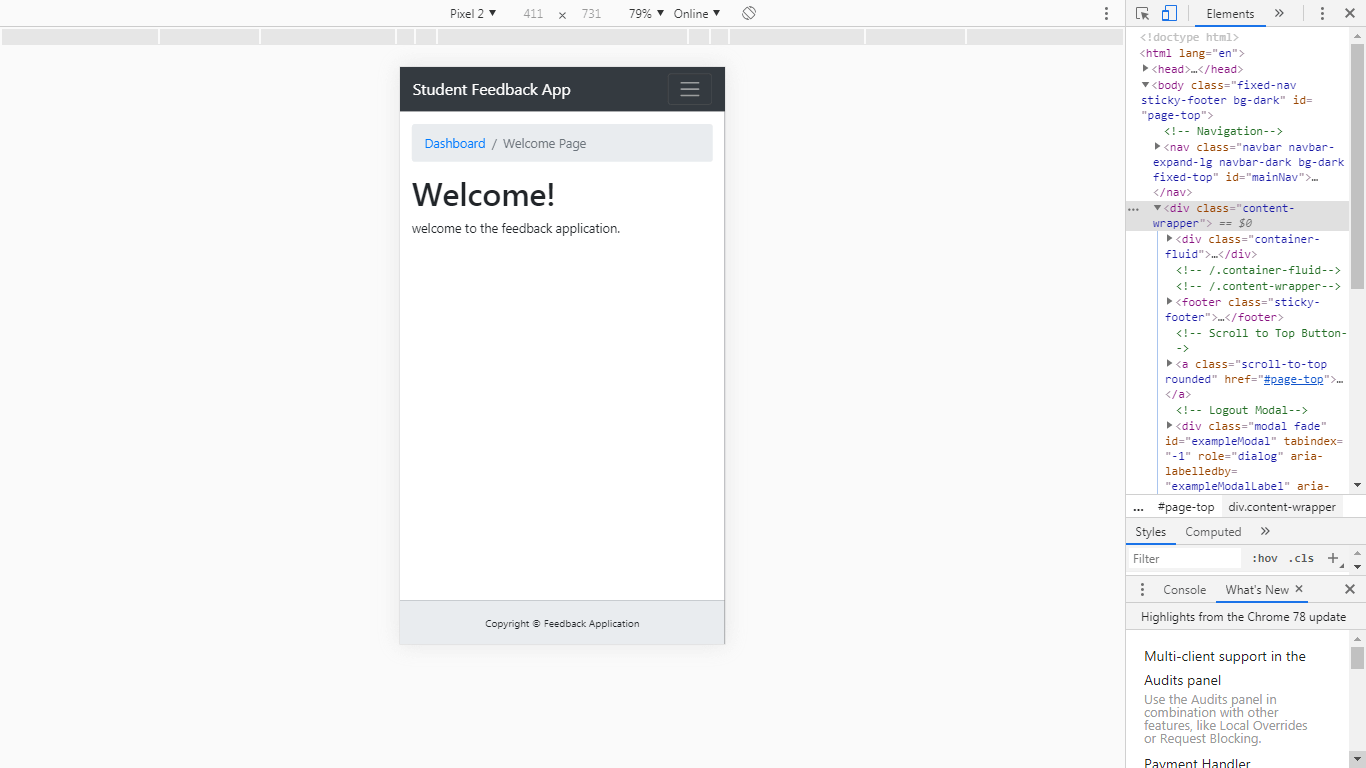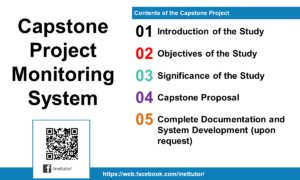National Crop Forecasting and Monitoring System
Agriculture forms the backbone of many economies, ensuring food security and supporting livelihoods. With the growing challenges of climate change, pest infestations, and unpredictable weather patterns, accurate crop forecasting and effective monitoring have become essential tools for modern agricultural planning. These tools not only safeguard food production but also optimize resources and improve efficiency across the agricultural sector.
Why Crop Forecasting and Monitoring Matter
Table of Contents
Crop forecasting provides insights into expected yields, enabling stakeholders to prepare for surpluses or shortages in advance. Monitoring, on the other hand, helps track crop health and growth throughout the season, identifying issues like pest outbreaks, diseases, or drought stress early on. Together, these processes empower farmers, policymakers, and researchers to make informed decisions, reducing risks and boosting productivity.
Objectives of the System
- Forecast Crop Yields and Productivity
The system leverages historical data, weather patterns, and soil conditions to predict crop performance. Accurate yield forecasts help stakeholders plan for storage, distribution, and export needs. - Monitor Crop Health and Growth Patterns
By using technologies like satellite imagery and real-time data collection, the system ensures continuous monitoring of crop conditions. Early detection of issues allows for timely interventions, preventing significant losses. - Aid in Decision-Making
The system serves as a vital tool for all stakeholders. Farmers can use it to plan farming activities, policymakers can create effective agricultural strategies, and researchers can gain insights into crop trends for future improvements.
A National Crop Forecasting and Monitoring System is not just an agricultural tool; it’s a transformative solution designed to tackle the challenges of modern farming. By providing timely, data-driven insights, it ensures that the agricultural sector remains resilient, sustainable, and productive.
Core Features
A robust National Crop Forecasting and Monitoring System is built around features that empower stakeholders to make data-driven decisions, respond to risks, and optimize agricultural practices. Below is a detailed discussion of its core features and their significance.
- Crop Forecasting
Crop forecasting is a critical feature for predicting yields and productivity.
- How It Works: The system analyzes historical crop data, weather patterns, and soil conditions using machine learning models to generate predictions. Factors like rainfall, temperature, and soil fertility are evaluated to estimate future yields.
- Benefits: Accurate forecasting helps stakeholders prepare for market demands, optimize storage facilities, and manage resource allocation effectively.
- Crop Monitoring
This feature ensures real-time observation of crop conditions throughout their growth cycle.
- Satellite or Drone Imagery: Advanced imaging technologies provide detailed visuals of crop fields. Satellite imagery covers large areas, while drones can be used for precision monitoring of smaller zones.
- NDVI and Other Indices: The NDVI (Normalized Difference Vegetation Index) is a widely used metric for assessing plant health based on the amount of chlorophyll present. Other indices like the Soil-Adjusted Vegetation Index (SAVI) can further refine health assessments.
- Benefits: By identifying issues such as nutrient deficiencies, pest infestations, or water stress early, this feature allows for timely interventions, reducing potential crop losses.
- Weather Integration
Weather data plays a crucial role in agricultural planning.
- Integration with APIs: The system incorporates real-time and forecasted weather data from services like OpenWeatherMap or WeatherStack.
- Key Insights: Farmers can access data on temperature, precipitation, humidity, and wind speeds to plan irrigation, planting, and harvesting activities.
- Benefits: This integration minimizes the risks posed by unpredictable weather events and helps in resource optimization.
- Geospatial Mapping
Interactive mapping enhances the system’s usability and provides a spatial perspective on agricultural data.
- Crop Growth and Health: Geospatial tools visualize crop progress and health across regions, helping identify areas of concern.
- GIS Integration: Geographic Information System (GIS) technology ensures precise geotagging of farm locations, enabling stakeholders to target specific areas for interventions.
- Benefits: Policymakers and researchers can use these maps to plan regional strategies, distribute resources, and conduct risk assessments.
- Reports and Analytics
This feature generates actionable insights for all stakeholders.
- Data Analysis: The system processes raw data into digestible reports that highlight crop productivity, historical trends, and risk factors.
- Custom Reports: Stakeholders can generate reports tailored to their specific needs, such as yield forecasts, regional comparisons, or risk assessments.
- Benefits: These insights support strategic planning, improve decision-making, and enhance transparency across the agricultural sector.
- Alerts and Notifications
Proactive alerts keep users informed about critical developments.
- Automated Notifications: The system sends alerts about weather changes, pest infestations, or disease outbreaks via SMS, email, or app notifications.
- Risk Mitigation: Early warnings give farmers and policymakers time to respond, reducing the potential impact of threats.
- Benefits: This feature ensures that stakeholders remain updated and can act quickly to minimize losses.
- Data Visualization
Data visualization transforms complex data into comprehensible formats.
- Tools Used: Charts, graphs, and heatmaps present data in an easy-to-understand manner. For instance, heatmaps can display regions with declining crop health, while trend graphs can show yield predictions over time.
- User-Friendly Interfaces: Visualization tools enhance the usability of the system, making it accessible to users with varying levels of technical expertise.
- Benefits: By simplifying data interpretation, this feature helps stakeholders quickly identify trends and take action.
The core features of the National Crop Forecasting and Monitoring System work together to create a powerful platform for enhancing agricultural productivity and sustainability. From predicting yields and monitoring crop health to providing weather insights and real-time notifications, these features ensure that farmers, policymakers, and researchers are equipped with the tools they need to make informed decisions and mitigate risks. The integration of geospatial mapping, advanced analytics, and data visualization further enhances the system’s value, making it an indispensable tool for modern agriculture.
Technologies to Be Used
Building a National Crop Forecasting and Monitoring System requires a robust technological stack to ensure accuracy, scalability, and usability. The following is a breakdown of technologies for various components of the system, from frontend development to cloud integration and beyond.
- Frontend Technologies
The frontend forms the interface through which users interact with the system.
- React.js or Angular:
These frameworks enable the development of a dynamic, responsive, and interactive user interface.- React.js offers flexibility and component reusability, making it suitable for building complex systems.
- Angular provides a full-fledged framework with built-in tools for form validation, state management, and more.
- Leaflet.js or Mapbox:
These libraries power GIS mapping for visualizing crop data and geographical trends.- Leaflet.js is lightweight and ideal for rendering interactive maps.
- Mapbox provides advanced map customization and integration with geospatial data.
- Chart.js or D3.js:
These tools help visualize complex agricultural data in an easily digestible format.- Chart.js is beginner-friendly and provides ready-to-use charts like line graphs and bar charts.
- D3.js is highly customizable and suited for creating advanced, dynamic data visualizations.
- Backend Technologies
The backend handles server-side processing, API requests, and database interactions.
- Node.js or Django:
- Node.js is ideal for real-time applications and can handle high traffic efficiently.
- Django, a Python-based framework, offers simplicity, scalability, and robust security features for API handling.
- Flask (Python):
If a lightweight framework is preferred, Flask provides flexibility for building microservices and custom APIs.
- Machine Learning and AI
Machine learning drives predictive analysis and anomaly detection in the system.
- Python Libraries:
- NumPy and Pandas: For data manipulation and preprocessing.
- Scikit-learn and TensorFlow: For developing predictive models to forecast crop yields and detect anomalies in crop health.
- Google Earth Engine API:
This API allows the integration of satellite imagery for monitoring crop growth and environmental conditions, enabling remote sensing capabilities.
- Database Technologies
Efficient data storage and retrieval are crucial for managing vast amounts of crop and geospatial data.
- PostgreSQL with PostGIS:
This relational database with spatial extensions is perfect for managing geospatial data, such as coordinates, boundaries, and regions. - MongoDB:
A NoSQL database can be used for handling unstructured data, such as real-time sensor outputs or user feedback.
- Cloud Services
Cloud services ensure scalability and provide tools for data processing and machine learning.
- AWS, Google Cloud, or Azure:
These platforms offer infrastructure for hosting applications, processing data, and deploying machine learning models. - Firebase:
Firebase provides a real-time database for instant updates and notification services for alerts about weather or pest risks.
- APIs
APIs allow integration with external data sources and expand the system’s functionality.
- OpenWeatherMap or WeatherStack API:
These APIs provide real-time and forecasted weather data, crucial for agricultural planning. - Sentinel Hub API:
This API offers access to satellite imagery for analyzing crop health, growth patterns, and regional trends.
- IoT Integration (Optional)
Adding IoT devices can enhance real-time monitoring by collecting on-ground data.
- Sensors: Soil moisture, temperature, and humidity sensors can feed data directly into the system, complementing satellite-based monitoring.
- Mobile Development (Optional)
Mobile apps can provide accessibility to farmers and stakeholders on the go.
- React Native or Flutter:
These frameworks enable cross-platform mobile development, ensuring compatibility with both Android and iOS devices.
The National Crop Forecasting and Monitoring System leverages a combination of cutting-edge technologies to provide accurate predictions, real-time monitoring, and actionable insights. From machine learning-powered crop forecasting to interactive GIS maps and IoT integration, the chosen tech stack ensures the system is scalable, efficient, and user-friendly. This robust technological foundation positions the system as a vital tool for advancing modern agriculture.
Implementation Plan
Creating a reliable National Crop Forecasting and Monitoring System requires a well-structured implementation plan. This ensures that all system components work cohesively to deliver accurate insights and actionable data for stakeholders. Below is a step-by-step guide to the implementation process:
- Requirements Gathering and Stakeholder Analysis
- Objective: Identify the needs and expectations of farmers, policymakers, researchers, and other stakeholders.
- Key Activities:
- Conduct interviews and surveys with stakeholders.
- Define key objectives, such as crop yield forecasting, real-time monitoring, and alert systems.
- Prioritize system features based on stakeholder feedback.
- Outcome: A clear understanding of system requirements to guide the design and development phases.
- System Design and Prototyping
- Objective: Plan the system architecture and create an initial prototype.
- Key Activities:
- Design the system’s backend structure, data flow, and frontend interface.
- Develop prototypes for core features, including GIS maps, dashboards, and data visualization tools.
- Collect stakeholder feedback on the prototype for refinement.
- Outcome: A blueprint for development, ensuring all features align with user expectations.
- Development of Core Features
- Objective: Build the system’s essential functionalities.
- Key Features:
- Crop Forecasting: Develop machine learning models for yield prediction based on historical and environmental data.
- Crop Monitoring: Integrate satellite imagery and indices like NDVI for real-time tracking.
- GIS Mapping: Implement geospatial tools for interactive mapping and regional analysis.
- Outcome: A functional system with foundational features ready for integration and testing.
- Integration with External APIs and Databases
- Objective: Connect the system to external services and establish a robust data management solution.
- Key Activities:
- Integrate weather APIs (e.g., OpenWeatherMap) and satellite imagery APIs (e.g., Sentinel Hub).
- Set up the database for managing spatial and non-spatial data (e.g., PostgreSQL with PostGIS).
- Ensure seamless data exchange between APIs, databases, and the system.
- Outcome: A fully integrated system capable of leveraging external data sources.
- Testing and Deployment
- Objective: Ensure the system operates reliably and meets user expectations.
- Key Activities:
- Conduct functional, performance, and security testing.
- Involve stakeholders in user acceptance testing (UAT) to validate the system’s usability.
- Deploy the system in a live environment with ongoing monitoring.
- Outcome: A stable and user-validated system ready for widespread adoption.
- Training and Documentation
- Objective: Empower stakeholders to use the system effectively and maintain its operations.
- Key Activities:
- Conduct training sessions for farmers, government officials, and other users.
- Provide comprehensive user manuals, video tutorials, and FAQs.
- Develop technical documentation for system administrators and developers.
- Outcome: A well-trained user base and thorough documentation to ensure long-term system success.
The implementation of the National Crop Forecasting and Monitoring System involves a systematic approach that prioritizes stakeholder needs, robust design, and effective training. By following this step-by-step plan, the system can revolutionize agricultural planning and decision-making, driving productivity and sustainability for all users involved.
Future Enhancements
To remain at the forefront of agricultural innovation, the National Crop Forecasting and Monitoring System can adopt several future enhancements. These upgrades aim to address evolving challenges in agriculture while improving data security, efficiency, and versatility.
One significant enhancement is the integration of blockchain technology for secure crop data sharing. Blockchain can ensure that data such as crop yields, health metrics, and environmental conditions are stored transparently and securely. This tamper-proof system can foster trust among stakeholders, allowing farmers, policymakers, and researchers to exchange data confidently. Additionally, blockchain-powered smart contracts can automate data-sharing agreements, especially beneficial for verifying quality certifications or managing export records.
Artificial intelligence (AI) can also play a critical role in predicting pest infestations and crop diseases. By analyzing data from satellite imagery, weather patterns, and soil conditions, AI can detect early warning signs of pests or diseases, enabling timely interventions. AI-driven insights can further promote sustainable farming by suggesting precision pesticide use, minimizing environmental impact, and reducing crop losses. Incorporating image recognition tools can also help analyze drone or satellite imagery to detect anomalies in crop health with greater accuracy.
Expanding the system to include livestock monitoring is another transformative step. By integrating IoT sensors and GPS collars, the system can track livestock movement, monitor health conditions, and ensure optimal living environments. AI algorithms can predict diseases or detect abnormal behaviors in animals, helping farmers maintain healthy and productive livestock. Real-time dashboards can provide comprehensive insights into livestock health metrics and productivity, enhancing decision-making for farmers and agricultural enterprises.
Incorporating blockchain for secure data sharing, AI for pest and disease prediction, and livestock monitoring will significantly broaden the system’s capabilities. These advancements will make the National Crop Forecasting and Monitoring System a comprehensive, future-ready tool for modern agriculture, benefiting farmers and other stakeholders worldwide.
You may visit our Facebook page for more information, inquiries, and comments. Please subscribe also to our YouTube Channel to receive free capstone projects resources and computer programming tutorials.
Hire our team to do the project.


